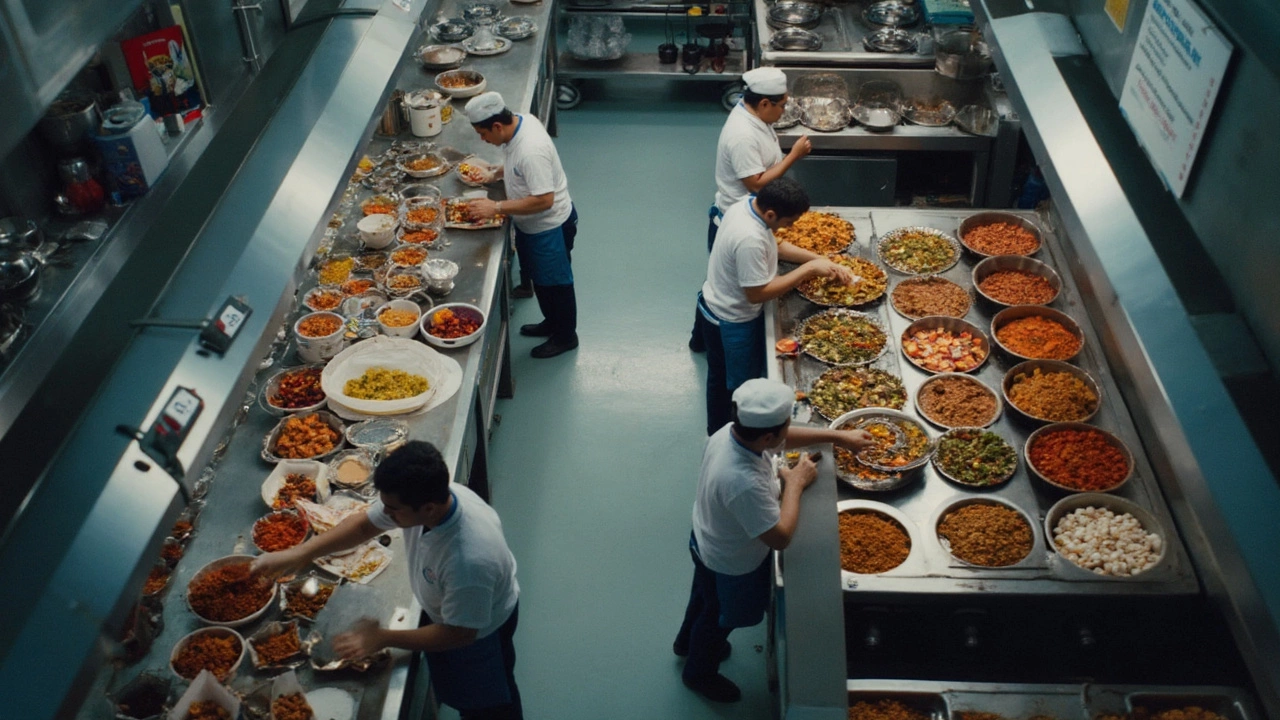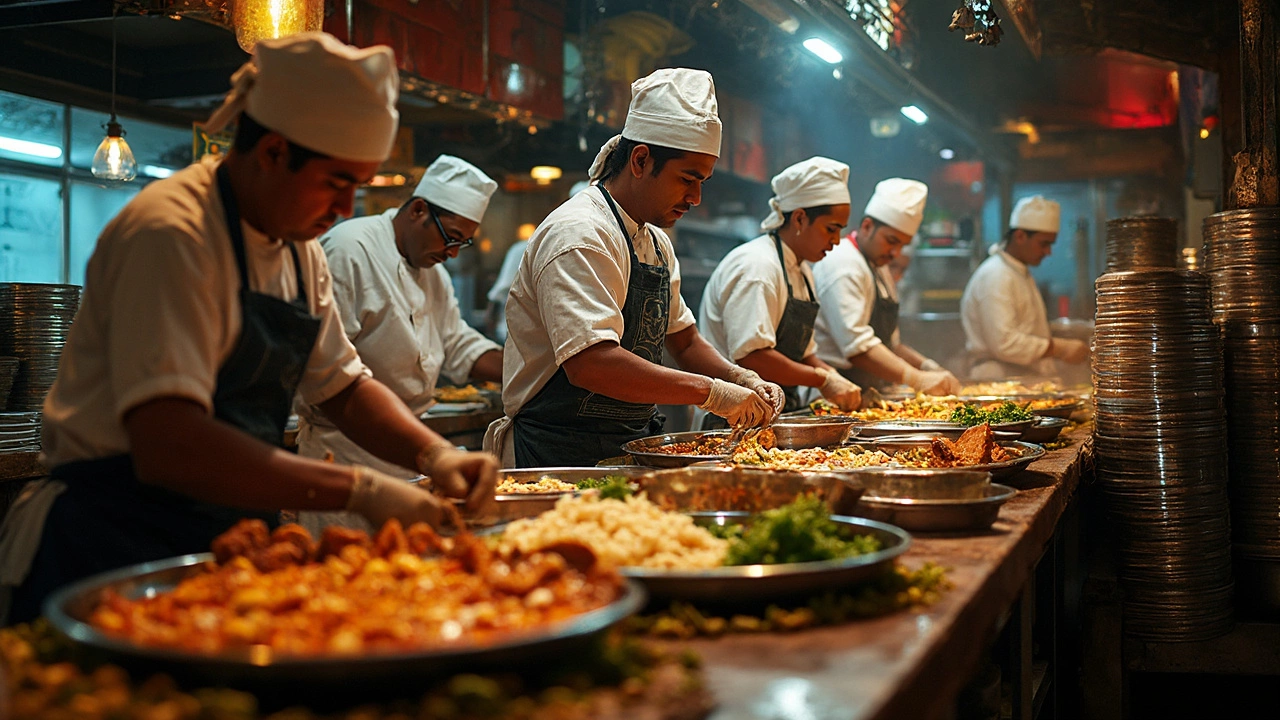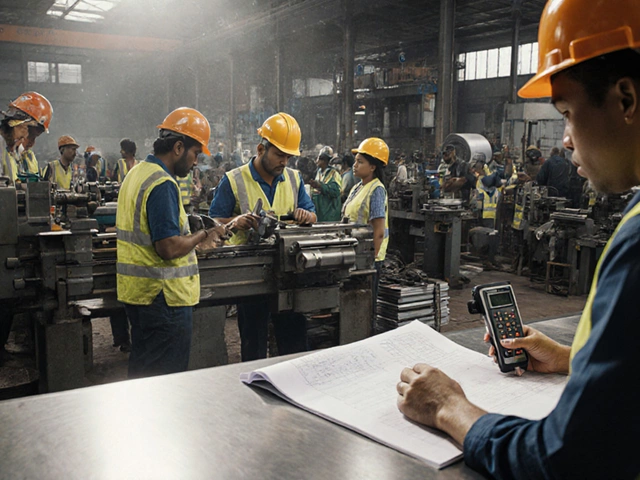Run a restaurant, or just into food service, and odds are you’ll run into the term CPU—it’s not about computers here. In restaurant talk, CPU means Central Production Unit, a spot where big chunks of food prep happen all in one place. Think of it as a behind-the-scenes kitchen that churns out sauces, soups, or even cooked meals, ready to get sent to different branches, food trucks, or outposts.
This is a gamechanger if you want to keep things consistent, fast, and cost-effective. Instead of training ten people across ten kitchens to make the same soup, you make one big batch at the CPU and share it everywhere. Staff don’t have to sweat all the complicated steps during a busy dinner rush. And you’re not wasting ingredients or tossing out leftovers at every location; one hub means tighter inventory control.
- What Is a CPU in a Restaurant?
- How CPUs Change Kitchen Efficiency
- Who Needs a CPU: Small vs Large Restaurants
- Food Safety and Quality Control in CPUs
- Getting Started: Setting Up a Restaurant CPU
- Tips for Maximizing Your CPU’s Impact
What Is a CPU in a Restaurant?
Walk into the back end of some of the most popular restaurant chains or even an independent eatery, and you might hear folks talking about their CPU. In the restaurant world, CPU stands for Central Production Unit. It isn’t a piece of computer hardware. Instead, it’s the kitchen where the bulk of food gets prepped, cooked, and packed before heading out to other locations or stations.
The main idea behind a CPU is to have one spot that handles a lot of the heavy lifting. For example, one big kitchen might prep all the soups, sauces, salads, or cooked proteins for a group of restaurants. Staff at those remote outlets just finish up, assemble, or reheat — they don’t start from scratch every day.
This is a pretty efficient way to do things, especially when you want every customer to have the same meal experience, whether they’re in the city center or at a food truck on the edge of town. The CPU brings consistency, which is critical for chains or groups trying to build a brand around taste and quality.
- Chain restaurants often use CPUs to roll out new menu items everywhere at once.
- Catering companies manage enormous functions, like stadium events, from a central kitchen (the CPU).
- Even local restaurant groups can run a small-scale CPU in a single backroom or nearby facility.
Done right, a CPU can actually save money and time. Instead of buying pricey gear for each kitchen, money goes into one tricked-out facility. It’s easier to track inventory as well, since bulk purchases and storage are centralized. That slashes food waste and cuts down on delivery mess-ups.
| Benefit | How CPUs Help |
|---|---|
| Consistency | Identical recipes and techniques in every serving |
| Cost savings | Bulk buying and fewer duplicate tools |
| Speed | Meal parts are ready faster during service |
| Safety | Central oversight of hygiene and standards |
Setting up a CPU isn’t just for big chains or fancy restaurants. Loads of ghost kitchens, meal prep businesses, and even some bakeries have jumped on board because it just works. Whether you’re making hundreds or thousands of meals a day, having a central hub gets everyone on the same page — and the food out faster and more reliably.
How CPUs Change Kitchen Efficiency
If you ever wondered how big restaurant chains keep their food tasting the same everywhere, it’s all about the Central Production Unit (CPU). A strong CPU totally flips the script on how a kitchen runs. Here’s what changes when you lean into a CPU for your operation:
- Consistency: By making sauces, soups, salad mixes, or even marinated meats in one spot, every customer gets the same experience whether they’re at location A or location B.
- Speed: With a CPU cranking out the basics, restaurant kitchens just assemble and finish dishes. No one’s making everything from scratch in the middle of a dinner rush.
- Less Waste: One hub equals tighter control on ingredients—it’s easier to buy in bulk and use up everything before it goes bad. That means lower food costs.
- Labor Savings: Skilled tasks happen at the CPU, so smaller locations don’t need a full team of trained cooks. You can get by with fewer folks during slow hours.
Check out some actual numbers from companies that switched to a CPU model:
| Metric | Before CPU | After CPU |
|---|---|---|
| Kitchen Labor Hours per Week | 220 | 150 |
| Food Waste (Pounds/Week) | 120 | 60 |
| Avg. Prep Time per Dish (Minutes) | 12 | 6 |
Notice how not only did labor hours drop, but food waste was cut in half. When you prep in bulk, it’s easier to manage inventory and minimize spoilage. Prep times for each dish get sliced, so staff spend less time scrambling and more time focusing on customers.
The real win: customers get hot, fresh, consistent food fast—and your kitchen actually runs smoother, not just harder. That’s why so many brands, even smaller local chains, are turning to CPUs for their back-of-house backbone.
Who Needs a CPU: Small vs Large Restaurants
Not every place needs a CPU, but it can be a lifesaver depending on your setup. For big brands like Chick-fil-A, Panera Bread, or even chains like Chipotle, CPUs pretty much keep the place running. They pump out sauces, chopped veggies, and cooked proteins by the ton, then ship them to dozens, sometimes hundreds, of locations daily. That’s how national brands lock in the same taste and quality, wherever you order.
But what about a small independent spot? The idea might sound overkill if you’ve got just one place and a tiny staff. But here’s the thing—if you’re running two or more locations, maybe a food truck and a café, or even doing catering on the side, a small-scale CPU can actually save your sanity. It cuts down recipe mistakes, slashes food waste, and opens up bulk buying, which drops your ingredient costs.
For a clear picture, here’s what businesses usually gain from a CPU at different sizes:
| Type of Operation | Common Benefits of CPUs |
|---|---|
| Small restaurant (1-2 locations) | Easier prep for multiple outlets, better consistency, supports catering |
| Mid-size chain (3-10 locations) | Solid cost savings, improved quality control, faster menu rollouts |
| Large chain (10+ locations) | Major efficiency, nationwide consistency, major bulk purchasing power |
Pro tip: CPUs are popping up even in ghost kitchens and food delivery hubs now. With more folks ordering online, having a central kitchen lets different brands under the same roof share storage and staff. Don’t think you need a factory—sometimes a CPU is just a back room with a few industrial appliances and a good fridge.
- If you’re doing steady delivery, a CPU can help keep orders flying out fast.
- For small chains, it can mean jumping on food trends or new menu items without extra stress.
- Bigger brands basically need CPUs to keep up with demand and stick to health codes.

Food Safety and Quality Control in CPUs
Keeping food safe and top-notch in a restaurant CPU is non-negotiable. When you prep and cook food in bulk, a single mistake can ruin a whole batch—and your reputation. That’s why most CPUs stick to strict safety practices like clockwork. The basics? Chill food fast, cook to the right temperature, and stay on top of cleaning everything from tools to counters.
The U.S. FDA says that cooked food shouldn’t sit in the danger zone (between 40°F and 140°F) for more than two hours. In a CPU, cooks use blast chillers and digital thermometers to make sure food cools down quick. And it’s not just about temperature. People working in CPUs wear gloves, keep long hair tied back, and use separate equipment for raw and cooked foods to stop cross-contamination.
Consistent quality across batches is huge for chain restaurants or anyone with more than one spot. CPUs often lean on checklists, standardized recipes, and regular training so that every batch tastes the same. Some CPUs test random samples daily to make sure the food flavor, texture, and safety hold up. That means you could eat the same soup at three different outlets and not tell which one made it—that’s kind of the whole point.
- Label and date everything—no mystery containers allowed.
- Run temperature checks every couple of hours.
- Hold regular staff training on updated food safety rules.
- Track source and lot numbers for easy recalls if an ingredient goes bad.
Want to see how this works in real life? Here’s a snapshot of what big-name CPUs do to keep standards tight:
| Step | Goal | Example Tool |
|---|---|---|
| Blast Chilling | Cool food below 40°F quickly | Commercial blast chiller |
| Batch Testing | Check taste and safety | Random sample tasting & instant-read thermometers |
| Traceability Tracking | Recall issues fast if needed | Inventory/logging software |
| Staff Training | Uniform safety habits | Monthly check-ins & hands-on demos |
Following these steps keeps a CPU humming along without food safety scares—and makes it way easier for any restaurant to keep quality exactly where they want it.
Getting Started: Setting Up a Restaurant CPU
So, you’re ready to set up a Central Production Unit (CPU) for your restaurant. First, pick your location carefully. You want a spot close to your main outlets but not so expensive that it eats into your profits. Lots of big chains pick warehouse districts because rent is cheaper, but there’s still room to store a ton of ingredients and gear.
Next up: layout and equipment. The ideal CPU layout puts raw ingredient storage, prep, cooking, packing, and cold holding all in one smooth line—no zigzag walks or waiting for space. Here’s some basic equipment you’ll probably need:
- Commercial mixers, slicers, and food processors
- Heavy-duty ovens and stovetops
- Blast chillers for fast cooling
- Vacuum sealers and packing stations
- Loads of fridge and freezer space
Don’t guess on equipment sizing. Figure out how much food you need to prep per day and build from there. Overspending on fancy gadgets you’ll never use just wastes cash and space.
Food safety is a huge deal in CPUs—one bad batch can mess up several restaurants. Health codes might force you to have handwashing sinks, separate storage for raw and cooked stuff, and temp monitors everywhere. The FDA recommends chilled foods move from 135°F to 41°F within six hours, so a blast chiller is basically non-negotiable.
Now onto staffing. Usually, you want your most skilled cooks here, since their work affects every location. A lot of chains pay their CPU crew better than regular line cooks just to keep quality up. This creates a tight team that really understands the recipes, not a revolving door of temp labor.
Check out this example table to get a feel for startup costs and common CPU expenses:
| Startup Element | Estimated Cost (USD) |
|---|---|
| Lease & Renovations | $30,000 - $100,000 |
| Commercial Equipment | $50,000 - $250,000 |
| Licenses & Inspections | $2,000 - $10,000 |
| First Month’s Payroll | $7,000 - $25,000 |
| Inventory (Initial Stock) | $5,000 - $15,000 |
If you're serious about food processing unit efficiency, track your numbers right from the start: waste, batch yields, transfer times. The better your data, the faster you can spot issues and make changes. Bonus tip: use batch logs and digital checklists so nothing gets skipped and training new staff is a breeze.
It sounds like a lot (and it is early on), but a tight, well-run CPU pays off fast if you want to grow without everything turning into chaos.
Tips for Maximizing Your CPU’s Impact
Having a Central Production Unit (CPU) can seriously level up your food operation, but just sticking it in doesn’t guarantee results. You’ve got to run it smart. Here’s what works out in the real world:
- Standardize recipes and processes. A clear, step-by-step method stops your pasta sauce from turning out different every week. Use digital recipe management or even just laminated recipe cards—whatever makes sure every batch matches the last.
- Track your ingredients like a hawk. Invest in a simple inventory system to flag when you’re about to run out or if you’re sitting on too much stock. This helps dodge wasted food and shrinkage.
- Use batch cooking for your crowd-pleasers. If 80% of your menu moves fast, prep those items in volume at the CPU. You’ll save time, cut down on labor costs, and still keep quality high.
- Schedule regular quality checks. It’s easy for standards to slip if nobody’s watching. Set up quick taste tests or visual checks before anything heads out to other locations.
- Keep communication tight with your satellite locations. If branch chefs notice the soup needs more salt or the prep isn’t holding up on reheat, fix it ASAP. A fast feedback loop makes the whole operation better.
Don’t forget about the gear. Commercial blenders, combi-ovens, and vacuum sealers can handle big volumes and ramp up efficiency. Sure, they’re an investment, but they pay off once your output grows.
Let’s talk numbers for a minute. A study by the Foodservice Consultants Society found that restaurants using CPUs often slice labor costs by as much as 20%. That adds up, especially if you’re dealing with tight margins every month. You’re trimming prep time too, freeing up staff for customer-facing roles or higher-value tasks.
| Benefit | Typical Improvement |
|---|---|
| Labor Cost Savings | 10-20% |
| Consistent Food Quality | 80% reduction in menu item variance |
| Ingredient Waste Reduction | Up to 15% |
This level of control also makes food safety a lot easier. One spot to monitor means less chance of mistakes and quicker reactions if there ever is an issue. Trust me, health inspectors prefer this setup, too.
Bottom line: treat your CPU as the heart of your operation, not just a backroom add-on. Lay down clear systems, check your product constantly, and invest in gear that’ll let you scale up without killing quality. Your people (and your bottom line) will thank you.





